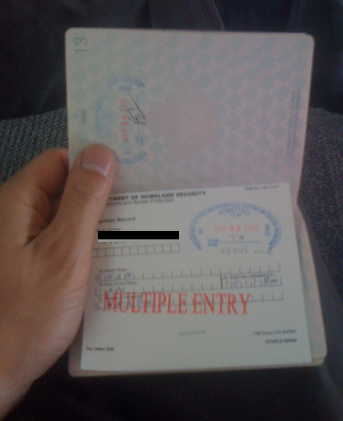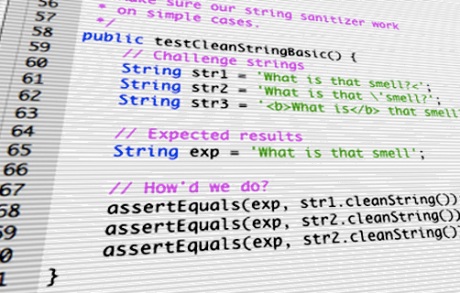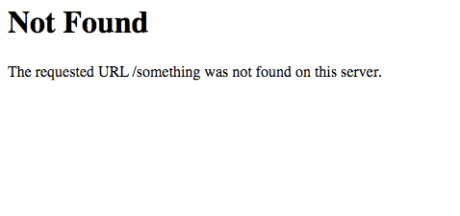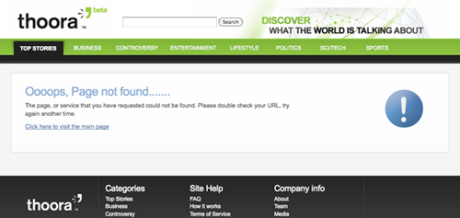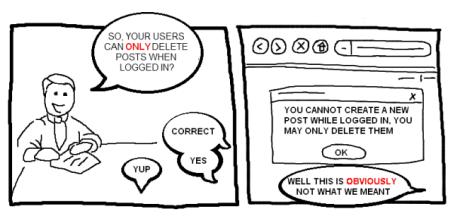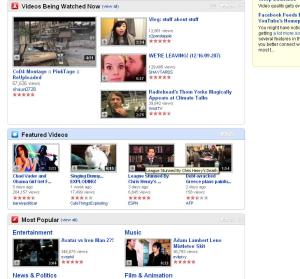Every so often, I see an idea that really catches my attention. About a month ago I found out about the website http://chatroulette.com which is a website that connects you to a complete stranger via webcam. The idea is dead simple, but it has achieved explosive success. While the service itself (to me) is pretty useless, it is an incredible example of a simple idea captivating a mass audience. More specifically, this website is achieving monstrous growth which is certainly worth looking at. In this post I will look at reasons why I think it is succesful, but also reasons why it won’t last. Feel free to check it out for yourself (NSFW warning issued). I will not review the site itself, because it has been done many times before.
What was so different?
Internet users are used to living in a comfort zone. We constantly use the same website over and over again and anything that deviates from our regular usage pattern raises alarms. We make baby steps towards change.User generated content was useless at first, now we have Wikipedia. Facebook updates seemed to be “too much information” and now we have Twitter. But sometimes, things arrive that really break the mold, and it catches our attention.
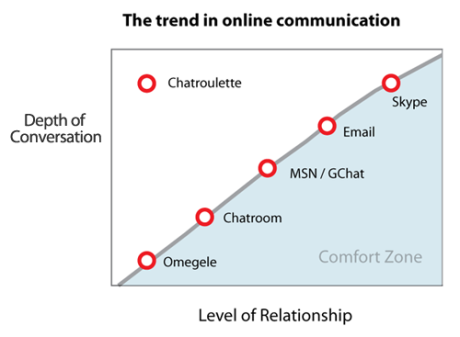
Based on a visual I first saw presented by Mark Watson with UofT's HCI group
A quick visual of how I interpret different communication platforms. I think “depth” is the wrong word, although “fidelity” doesn’t really work either. What I intended on the Y axis was how much the conversation mimicked a meaningful face to face talk. Omgele is a website allowing quick random 1on1 chats. Complete stranger, short conversation, very little emotional connection. Chatrooms have a similar model, but they can turn into more meaningful conversations and relationships. MSN/Chat programs involve personal conversations with whitelisted contacts (as opposed to random people). Email (for professional use) is usually limited to an even smaller whitelist, and the conversation is more professional*. Lastly, Skype offers a free video/audio chat application that allows me to have face to face talks with people I really choose to have face to face conversations with. Now this is a gross over simplification of most of these mediums/applications, however the graph represents the type of interaction we are used to and comfortable with.
*I must digress here noting how terrible it is that email now a days contains some of the highest quality writing I see online. When I have friends squeeze messages into 140 characters for Twitter it makes the part of me which strives for better writen[sic] English die a little.
Chatroulette broke away from this mold, and presented us with something that was different, it was wrong, it was uncomfortable. But it was interesting, and it was new, and it fed the desire to have “realtime” content to the extreme. And it was successful:
[Live data, this was posted March2010, which showed strong growth for 3 months straight]

Why was it ok? Why now?
-Flash recently enabled peer to peer webcam data transfers, which meant no heavy server costs to support video chat: a pet project turned successful
–Years of use of social media has conditioned internet users that talking to strangers is ok, even on webcam
-Webcams are now a commodity on new laptops, lots of people to chat with
-highspeed internet is now common enough that we can assume users will be able to handle it
What made it popular?
-The next button – never before have we been so demanding for instant results satisfaction.
-The shock value – you never know what is around the next corner
-The quick fix – you are always one click away from peeking into a complete stranger’s life
Why won’t it stick?
Now I can’t imagine that they’d ever expect the website to be such a a hit, but there are still some problems they will deal with. You cannot use this website at work, and the big NSFW barrier will prevent a lot of day time traffic. Why is it NSFW? Well if you have ever used the website, you will know why. That itself will cause some problems, as the amount of male nudity likely makes most people run for the hills. There is also a general lack of stickiness to the service itself: why come back? My experience today is no different than my experience tomorrow. There is no advancement, there is no inbox to check.
Site of the week? Probably site of the first 2 quarters of 2010 (although with some updates, I think they can really do something with this). But the lesson learned here for me is priceless. Thinking outside the box, or at least, breaking away from the existing mold creates something that people might like. Although I wouldn’t claim that my graph above is completely accurate, traversing it helps you easily come up with some great app ideas. Chatroulette was really just a cross between Skype and Omegle. I have seen so many Twitter clones, or Facebook clones. Google Buzz even seemed like a lot of existing ideas mashed into one. My hat goes off to Andrey Ternovskiy who, possibly by pure accident, came up with the first fresh idea I have seen in a while.


